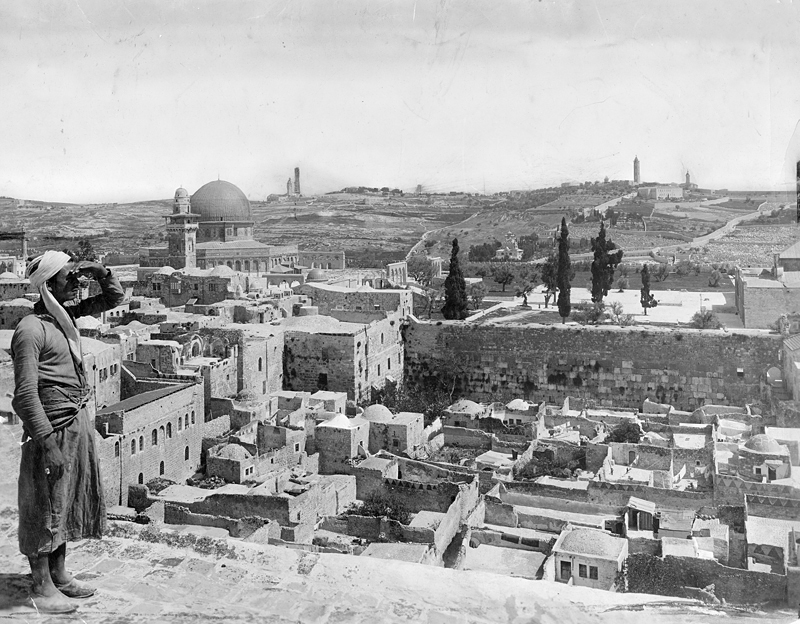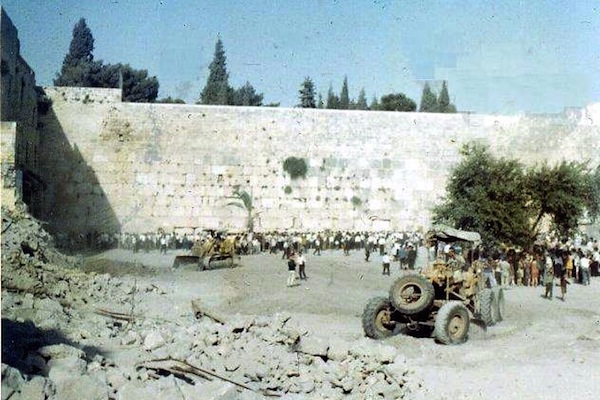The sins of the 1967 War are still with us. Not only in the continuing crime of the occupation and the new victims it takes, but also in the unanswered questions and the still unaccounted for victims.
By James J. Zogby

In June of 1967, I was in the midst of my final weeks in college when the war broke out. At the time, I knew little about the Middle East, since I was more engaged in the anti-war and civil rights movements. And so as I watched the UN Security Council debates that preceded and followed the war, I saw what was unfolding through the prism of those struggles with which I was more familiar—the one in opposition to the war in Vietnam and the other for civil rights and justice in America. As a result, I was skeptical both about the U.S. and Israel’s justifications for the war and the reporting and political commentary that followed. The story, as it was being told, was too simple and, therefore, it just didn’t ring true. I knew there had to be more.
The war started and ended quickly and in the U.S., the media and political establishment were quick to celebrate the Israeli victory. It was, we were told, “clean and quick” and “miraculous.”
There were two haunting photos from that period that were intended to capture the essence of the war. One featured handsome and hopeful young Israeli soldiers standing next to Jerusalem’s Western Wall. It was meant to convey their joyous victory and their conquest of Jerusalem. The other was a more ominous picture of shoes in the Sinai’s desert sand. We were told that they had been left by fleeing Egyptian soldiers, clearly intending to portray Israel’s enemies as vanquished cowards.
I knew enough about the “fog of war” to know that we didn’t know the whole story, but it wasn’t until years later that the bloody horrors that accompanied these pictures became known establishing that this war had neither been “clean” or had it been “miraculous.”
In September of 1995, The New York Times ran a story under the headline “Egypt Says Israelis Killed POW’s in the ’67 War.” The story reported on the discovery of mass graves in the Sinai desert containing the bodies of Egyptian soldiers, together with eye witness accounts of the killings. One former Egyptian soldier reported, “I saw a line of prisoners, civilian and military, and they [the Israelis] opened fire at them all at once. When they we’re dead, they told us to bury them.”
While this crime was news to readers of the Times, it had been known in Israel for years, since Israeli officers had, previously admitted to killing unarmed prisoners. Nevertheless, the story died because neither the US nor the Egyptian government wanted to pursue it out of fear that it would disrupt the Egyptian-Israeli peace agreement and the ongoing Israeli-Palestinian “peace process.” For their part, the Israelis being masters at brushing off bad news, as if it didn’t happen, knew that it would go away. And it did.
The story of the Western Wall was no less troubling. Here, too, what happened to the Palestinian inhabitants of the Mughrabi neighborhood that was adjacent to the Wall has long been known and long been ignored.

Just last week, an Israeli newspaper, Haaretz, published an account of the way Israel quickly moved to consolidate its hold over Jerusalem by demolishing the entire neighborhood of 135 Palestinian homes that bordered the Wall, forcibly evicting its residents.
The story’s intent was to romanticize how 15 Israeli contractors came together quickly to plan the demolition of the Arab homes in order to create a plaza where Jewish worshipers could come to pray at the Wall. Their goal, as they described it, was to “purify” the area. They called it a “great and glorious mission.” In reality it was neither great nor glorious.
One of these contractors related, with chilling calm, how they went into the neighborhood with a megaphone and “asked the people [the Palestinian inhabitants] to gather” and then ushered them out as the bulldozers began their work. Some “residents refused to leave and left only when the bulldozers rammed” into their homes. One old woman was buried alive in the rubble of her home. The article describes a picture, from that time, showing a demolished home “with furniture, curtains, and a vase with flowers inside.” It was “ethnic cleansing” of innocent Palestinians to “purify” an area in order to provide Israelis a place to pray.

Even with these accounts, there is still so much we don’t know and so many more stories that need to be told.
Looking at the official records of the deaths of the 1967 War, we are told that 10,000 Egyptians died while another 5,000 were listed “missing.” Why was there no accounting for this large number? What other secrets still reside beneath the Sinai’s sands? And it wasn’t only the families from the Mughrabi neighborhood who were “gloriously” removed to “purify the area.” A total of 300,000 new Palestinian refugees were created by that war—losing their homes and belongings, retaining only their memories.
Celebrating victories while ignoring the victims, and our responsibilities to them, only insures that no lessons will be learned, thereby only serving to lay the predicate for the next war.
As it is, the sins of the ’67 War are still with us. Not only in the continuing crime of the occupation and the new victims it takes daily, but also in the unanswered questions and the still unaccounted for victims of the horrors that occurred 50 years ago.
If we don’t commit ourselves to finding the “missing,” providing the displaced with the justice they deserve, and calling to account those who committed these crimes, we will stand as failures in the eyes of history and our fellow man.
James J. Zogby is the president of the Arab American Institute.

